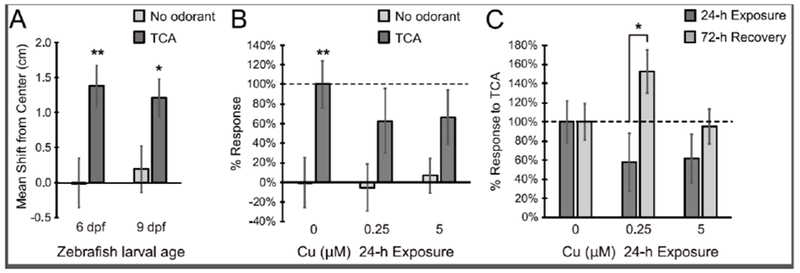Figure 6:

Olfactory-driven behavior assays showed loss and regeneration of olfaction after 24 h Cu exposure and following a 72 h recovery. A. Behavioral analysis of unexposed 6 dpf and 9 dpf control larvae to no odorant (embryo media) and taurocholic acid (TCA) show significant aversive response to TCA at both ages. B. Behavioral assays of 24-h Cu-exposed larvae to no odorant control and TCA show decreased aversive response to TCA with increased Cu concentration. C. Behavioral response of zebrafish larvae to TCA after Cu exposure and following 72 h of recovery in EM. Graphs are normalized to 100% TCA response of age-matched larvae. Error bars = ± SE; n=4-15 individual trials, 10 fish per trial. Asterisks indicate statistically significant change at *p<0.05 and **p<0.01 significance levels.
